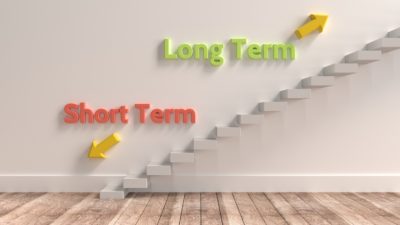 Many UK investors are familiar with the generous dividends paid by pharmaceutical giants like GlaxoSmithKline (LSE: GSK) (NYSE: GSK.US) and AstraZeneca.
Many UK investors are familiar with the generous dividends paid by pharmaceutical giants like GlaxoSmithKline (LSE: GSK) (NYSE: GSK.US) and AstraZeneca.
Retirees who are investing for income are particularly drawn to GlaxoSmithKline’s 5% dividend yield.
But there’s no reason why younger investors should ignore shares like GlaxoSmithKline.
While many investors see soaring share prices as the best way to grow their wealth, the regular reinvestment of a growing dividend stream is a steadier way to riches.
The science bit
Let’s do some maths to show the power of reinvesting dividends.
Assume you’re 30 years’ old, and you invest £20,000 into GlaxoSmithKline. You also decide to reinvest all the dividends paid.
At 65 you’ll still be too young to retire, according to the State, but with your own portfolio of income-delivering shares, you might be free to make your own mind up.
More to the point, your £20,000 in GlaxoSmithKline would have grown to £110,320!
That’s more than a five-fold increase in your initial starting pot. Not bad for a ‘boring’ strategy.
The small print to those big gains
It’s important to note I’m making several assumptions here.
Firstly, I’m ignoring inflation. This will meaningfully reduce the real terms value of your investment — but that will be true however you invest. So for our purposes here we can set this aside.
Secondly: there will likely be costs involved in reinvesting your dividends. Such costs are easily managed nowadays (you pay just 2p in the £1 to reinvest dividends with The Motley Fool’s Share Dealing service) but even small fees will reduce your final pot by a couple of thousand pounds.
Most importantly, I’m assuming the share price of GlaxoSmithKline doesn’t change for 35 years!
Obviously, that’s pretty unlikely to be the case.
This is important because the compound interest calculation assumes you are reinvesting your dividends to buy the same 5% yield you can get today.
However, if the share price was to double, say, then all things being equal you’d only be buying a 2.5% yield (half today’s 5%) with your reinvested dividends.
This would reduce your future income stream (and hence the free cash you’d have to buy more Glaxo shares and even more dividends) although of course a higher share price would also boost the capital value of your holdings.
Grow for it
In an ideal world Glaxo’s share price would stay low for, say, 30 years, and then ramp up for four or five years before your retirement. You’d buy more shares cheap for decades then get a nice boost at the end.
But stock market investing is rarely so accommodating.
However, there’s an enormous factor that I haven’t even mentioned yet.
While GlaxoSmithKline’s share price will probably rise, over the long term it’s likely to be in tandem with the growth of its annual dividends.
You see, over the past five years GlaxoSmithKline has grown its dividend payout by an annual rate of 6.4%. And I think it’s very reasonable to assume it will grow by a substantial amount in the future, what with populations ageing and requiring more medical treatment, and more of the world able to afford it.
Let’s be cautious, though, and say the dividend cash paid out annually grows by just 4% a year.
To keep things simple, let’s also assume Glaxo’s share price grows to exactly keep pace with this rising payout. This means we can also assume that the dividend yield remains at exactly 5% throughout the life of our investment.
Added up, this equates to a 9% total return per year.
Apply that to our 30-year-old investor’s initial £20,000 and after 35 years their investment would be worth more than £400,000!
Have a team of dividend deliverers
Such huge returns from reinvesting a growing stream of dividends is the secret to the success of famed income investors like Neil Woodford, and shows how a seemingly dull giant like Glaxo can make you rich.
Of course, there were a fair few assumptions in my example above. I think they were reasonable, but in reality investing is never so straightforward.
This is why it would be madness to bet your retirement income on just one share, even a steady income stock like GlaxoSmithKline.






